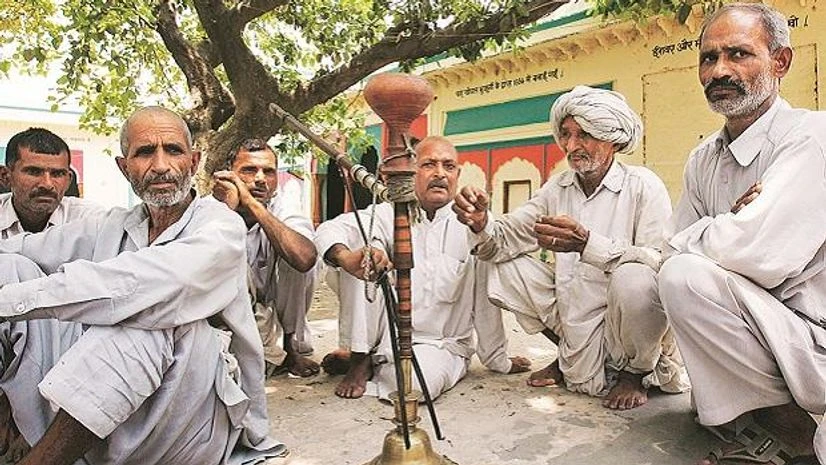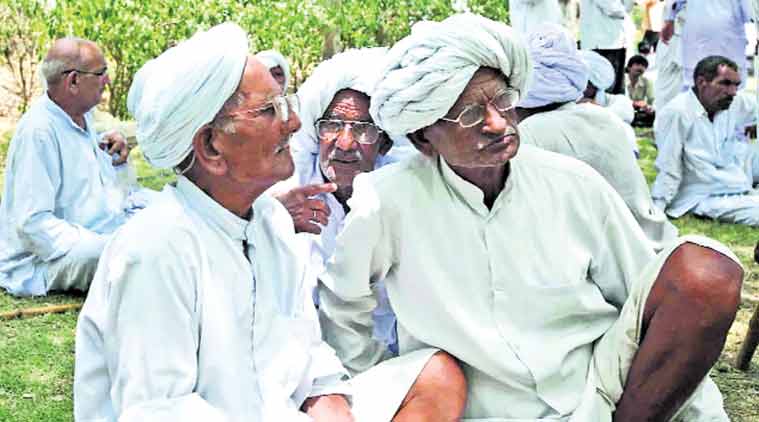Indian rural society, characterized by its diversity, complexity, and deeply entrenched social hierarchies, has long been a subject of sociological inquiry. Within this context, rural leadership and factionalism emerge as critical phenomena that shape the social, political, and economic dynamics of village life. Rural leadership refers to the individuals or groups who wield influence and authority within the village, often mediating between the community and external entities such as the state or market forces. Factionalism, on the other hand, denotes the divisions and conflicts within the community, often driven by competing interests, caste dynamics, and power struggles. Together, these elements provide a lens through which to understand the intricate social fabric of rural India.
)
This article explores the sociological dimensions of rural leadership and factionalism in Indian rural society, examining their historical roots, contemporary manifestations, and implications for social cohesion and development.
Historical Context of Rural Leadership in India
Rural leadership in India has evolved over centuries, deeply influenced by the country’s agrarian economy, caste system, and colonial history. Traditionally, leadership in villages was often vested in the hands of the upper castes, particularly the Brahmins and Kshatriyas, who held both economic and social power. The zamindari system, introduced during the Mughal era and later institutionalized by the British, further entrenched the power of landed elites, who acted as intermediaries between the colonial state and the peasantry.
The post-independence period saw significant changes in rural leadership dynamics. Land reforms, the introduction of Panchayati Raj institutions (local self-governance systems), and the rise of political parties aimed to democratize rural governance. However, these changes did not entirely dismantle the traditional power structures. Instead, they often led to the co-optation of new leaders into existing hierarchies, resulting in a blend of traditional and modern forms of leadership.
Caste and Rural Leadership
Caste remains a central axis around which rural leadership revolves in India. The caste system, with its rigid hierarchy and ascribed statuses, continues to influence access to leadership positions. Upper-caste individuals, by virtue of their social and economic dominance, often occupy leadership roles in village Panchayats, cooperatives, and other local institutions. However, the reservation system, which allocates a percentage of seats for Scheduled Castes (SCs), Scheduled Tribes (STs), and Other Backward Classes (OBCs), has provided opportunities for marginalized groups to ascend to leadership positions.
Despite these affirmative action measures, the reality on the ground is often more complex. Lower-caste leaders frequently face resistance from upper-caste groups, who may use their social and economic clout to undermine their authority. This tension between formal rights and informal power dynamics highlights the enduring influence of caste in shaping rural leadership.
Factionalism in Rural Society
Factionalism, or the division of the community into competing groups, is a pervasive feature of Indian rural society. These factions are often organized along lines of caste, kinship, economic interests, or political affiliations. Factionalism can be both a cause and a consequence of social and economic inequalities, as groups vie for control over resources, political power, and social status.

One of the key drivers of factionalism is the competition for scarce resources, such as land, water, and government benefits. In an agrarian economy where resources are limited, control over these assets becomes a source of power and prestige. Factions may also emerge in response to external interventions, such as development projects or electoral politics, which create new opportunities for resource allocation and patronage.
Caste plays a significant role in factionalism, as it provides a ready-made framework for group formation and mobilization. However, factions are not always aligned along caste lines; they can also cut across caste boundaries, particularly when economic interests or political alliances come into play. For example, a wealthy lower-caste individual may align with upper-caste factions to secure their economic interests, even if it means going against their caste group.
The Role of Patronage and Clientelism
Patronage and clientelism are integral to the functioning of rural leadership and factionalism. Patronage refers to the exchange of goods, services, or favors in return for political support or loyalty. In rural India, local leaders often act as patrons, providing access to resources, jobs, or government schemes in exchange for votes or allegiance.
This system of patronage reinforces existing power structures, as leaders use their control over resources to build and maintain their support base. It also perpetuates factionalism, as different leaders or factions compete to expand their networks of clients. Clientelism, while providing short-term benefits to individuals, often undermines long-term development by prioritizing personal gain over collective welfare.
Gender and Rural Leadership
Gender is another critical dimension of rural leadership in India. Despite constitutional guarantees of equality, women remain significantly underrepresented in leadership positions. The reservation of seats for women in Panchayati Raj institutions has led to an increase in female participation, but their effectiveness is often constrained by patriarchal norms and practices.
Women leaders frequently face resistance from male family members and community members, who may seek to control their decision-making or undermine their authority. Additionally, women from marginalized castes face intersecting forms of discrimination, further limiting their ability to exercise leadership. Despite these challenges, women leaders have played a crucial role in advocating for issues such as education, health, and sanitation, highlighting the potential for transformative leadership.
Implications for Social Cohesion and Development
The interplay between rural leadership and factionalism has significant implications for social cohesion and development. On the one hand, effective leadership can facilitate collective action, promote social justice, and drive development initiatives. On the other hand, factionalism can lead to social fragmentation, conflict, and the erosion of trust within the community.
Factionalism often undermines the effectiveness of development programs by diverting resources to favored groups or individuals, rather than distributing them equitably. It can also create an environment of instability and insecurity, discouraging investment and innovation. Moreover, the persistence of caste-based factionalism perpetuates social inequalities, hindering efforts to build a more inclusive and equitable society.
Conclusion
Rural leadership and factionalism are deeply intertwined phenomena that shape the social, political, and economic landscape of Indian rural society. While rural leadership has the potential to drive positive change and development, it is often constrained by the pervasive influence of caste, patronage, and gender inequality. Factionalism, rooted in competition for resources and power, further complicates the picture, creating divisions and conflicts that undermine social cohesion.

Addressing these challenges requires a multifaceted approach that goes beyond formal institutional reforms. Efforts to promote inclusive leadership, empower marginalized groups, and foster social solidarity are essential for building a more just and equitable rural society. At the same time, tackling the root causes of factionalism, such as economic inequality and caste-based discrimination, is crucial for creating an environment where development can thrive.
In the final analysis, the study of rural leadership and factionalism in India offers valuable insights into the complexities of rural society and the enduring legacies of history, caste, and power. By understanding these dynamics, sociologists, policymakers, and development practitioners can work towards creating a more inclusive and sustainable future for rural India.
Topic Related Questions
5-Mark Questions
- Define rural leadership and explain its significance in Indian rural society.
- How does the caste system influence rural leadership in India?
- What is factionalism, and how does it manifest in Indian villages?
- Briefly discuss the role of Panchayati Raj institutions in shaping rural leadership.
- How does patronage affect rural leadership and factionalism in India?
- Explain the concept of clientelism in the context of rural Indian society.
- What are the challenges faced by women in rural leadership roles?
- How does economic inequality contribute to factionalism in rural India?
- Discuss the impact of land reforms on rural leadership in post-independence India.
- How do traditional and modern forms of rural leadership coexist in India?
10-Mark Questions
- Analyze the role of caste in shaping rural leadership and factionalism in India.
- Discuss the historical evolution of rural leadership in India, from the colonial period to the present day.
- How does factionalism impact the implementation of development programs in rural India?
- Examine the role of patronage and clientelism in sustaining rural leadership in India.
- Critically evaluate the effectiveness of reservation policies in promoting inclusive rural leadership.
- Discuss the challenges faced by marginalized groups (SCs, STs, OBCs) in accessing rural leadership positions.
- How does gender inequality affect women’s participation in rural leadership roles?
- Analyze the relationship between economic resources and factionalism in rural India.
- Discuss the role of political parties in shaping rural leadership and factionalism.
- How do traditional power structures coexist with democratic institutions like Panchayati Raj in rural India?
15-Mark Questions
- Critically examine the interplay between caste, class, and gender in shaping rural leadership in India.
- Discuss the causes and consequences of factionalism in Indian rural society, with reference to sociological theories.
- Analyze the impact of rural leadership and factionalism on social cohesion and development in India.
- How has the introduction of Panchayati Raj institutions transformed rural leadership in India? Discuss with examples.
- “Factionalism in rural India is both a product of and a response to social and economic inequalities.” Elaborate.
- Discuss the role of rural leadership in mediating between the state and the community in India.
- Critically evaluate the role of women in rural leadership and the challenges they face in a patriarchal society.
- How do traditional and modern forms of leadership coexist in rural India, and what are the implications for social change?
- Analyze the role of rural leadership in addressing issues of social justice and inequality in Indian villages.
- Discuss the impact of globalization and modernization on rural leadership and factionalism in India.

4 thoughts on “Rural Leadership and Factionalism in Indian Rural Society”